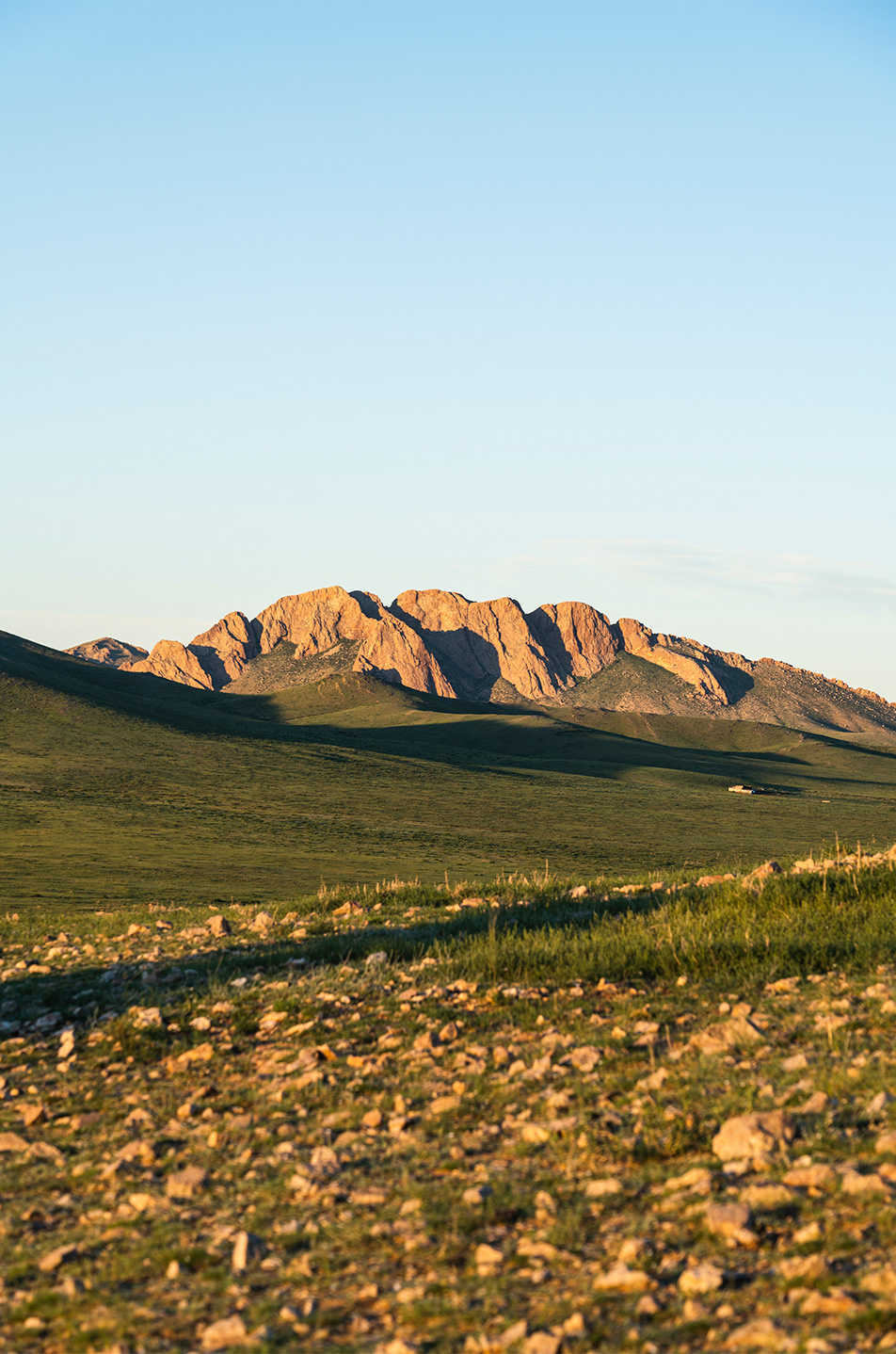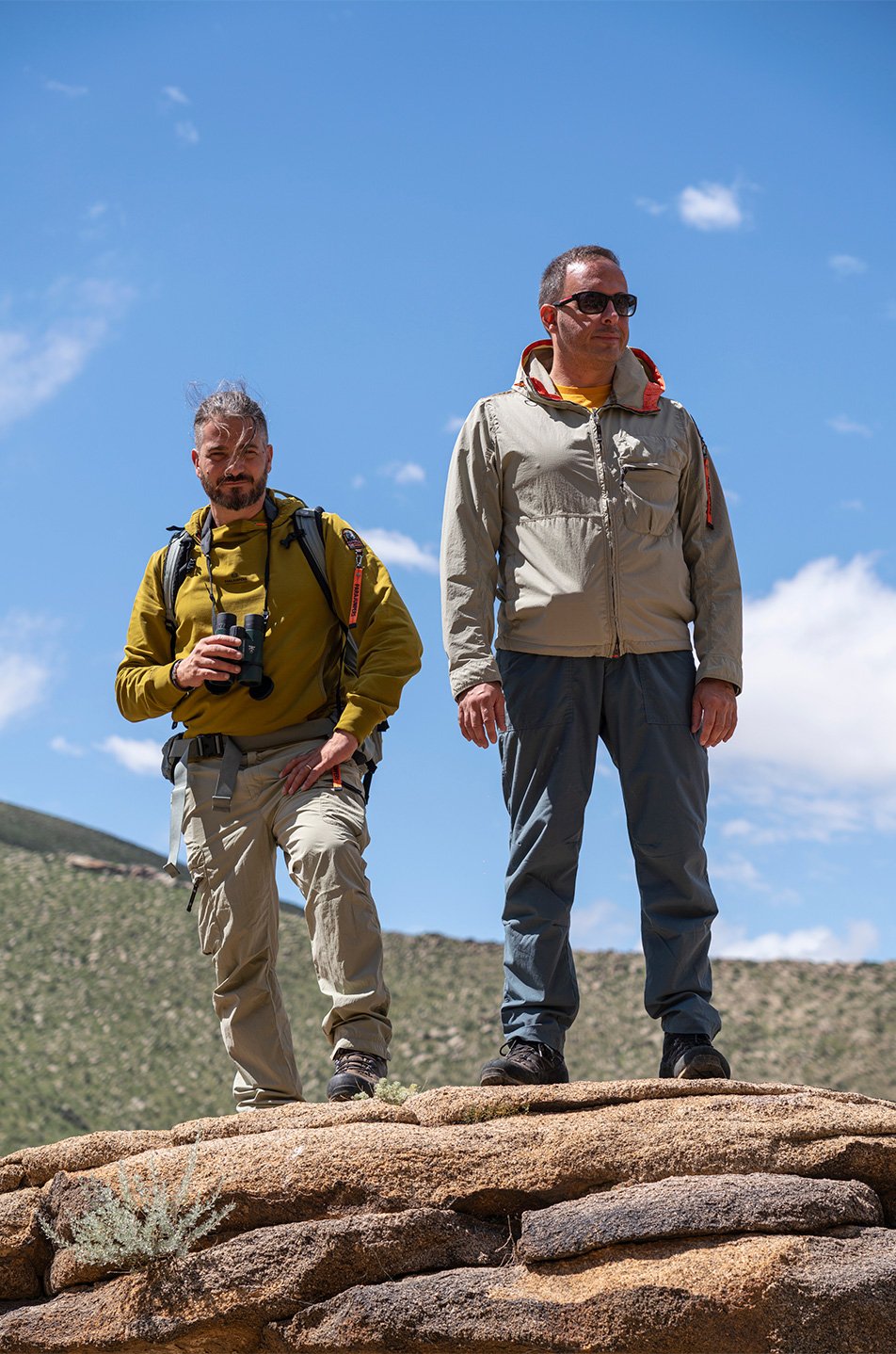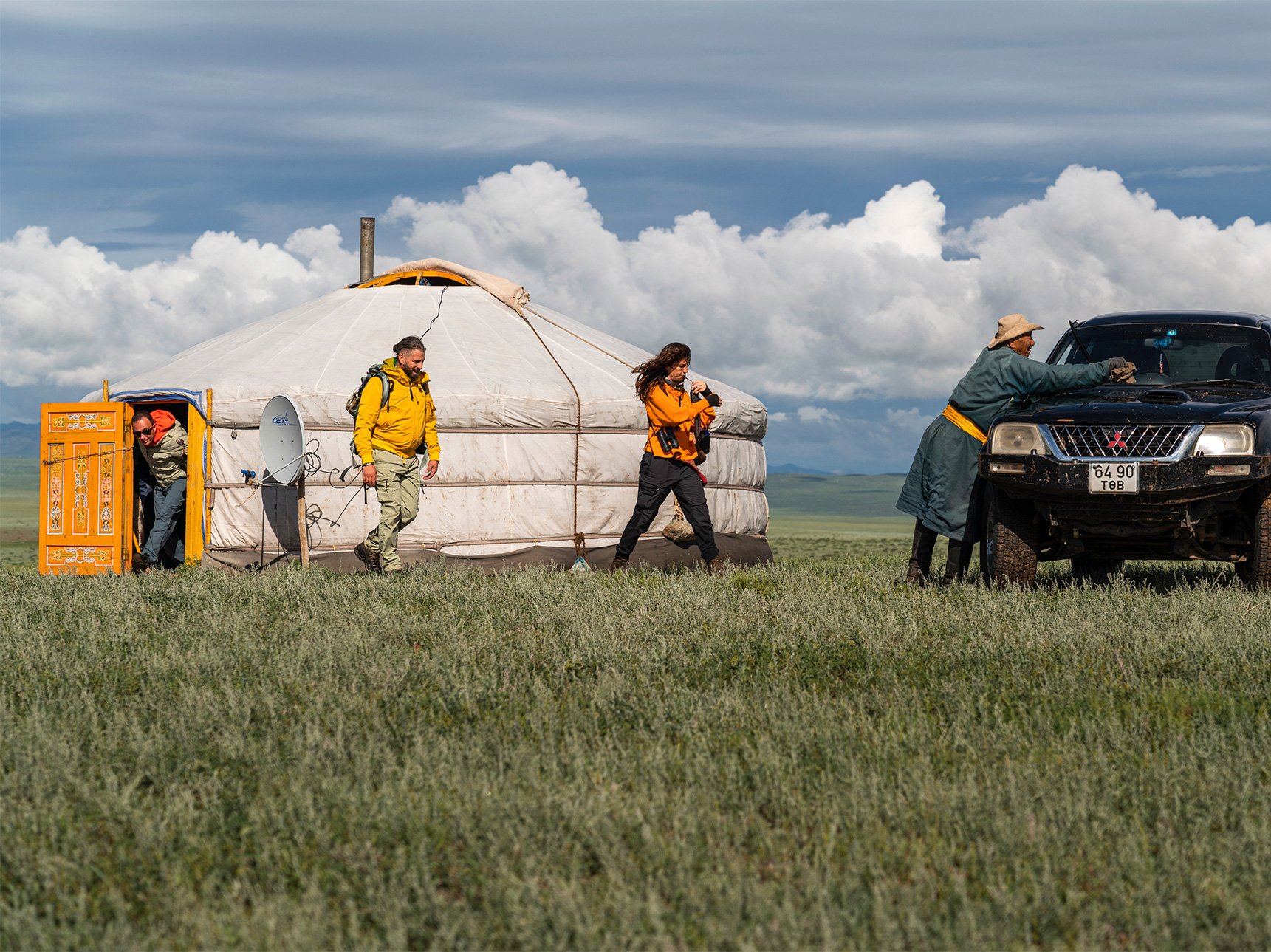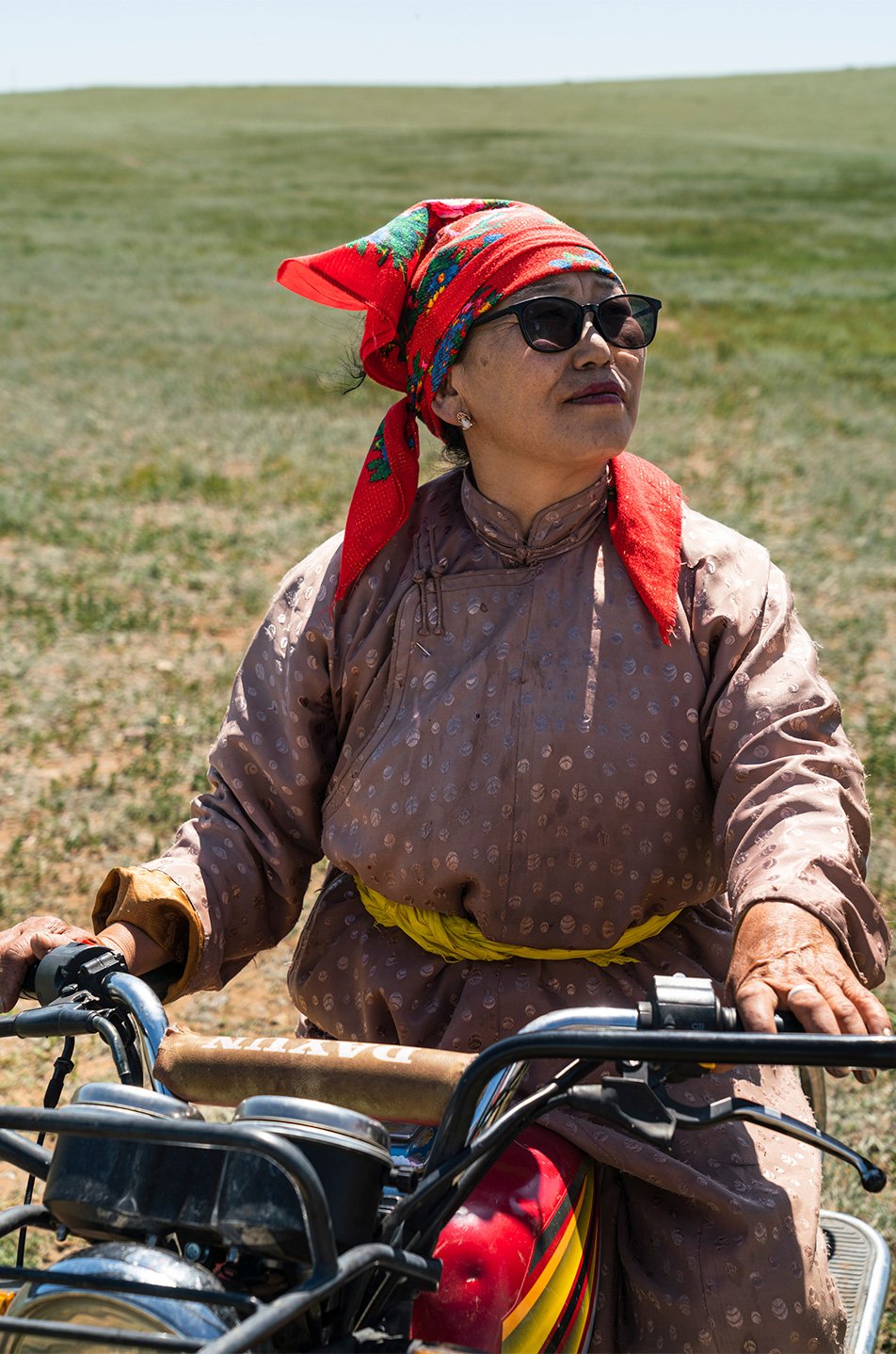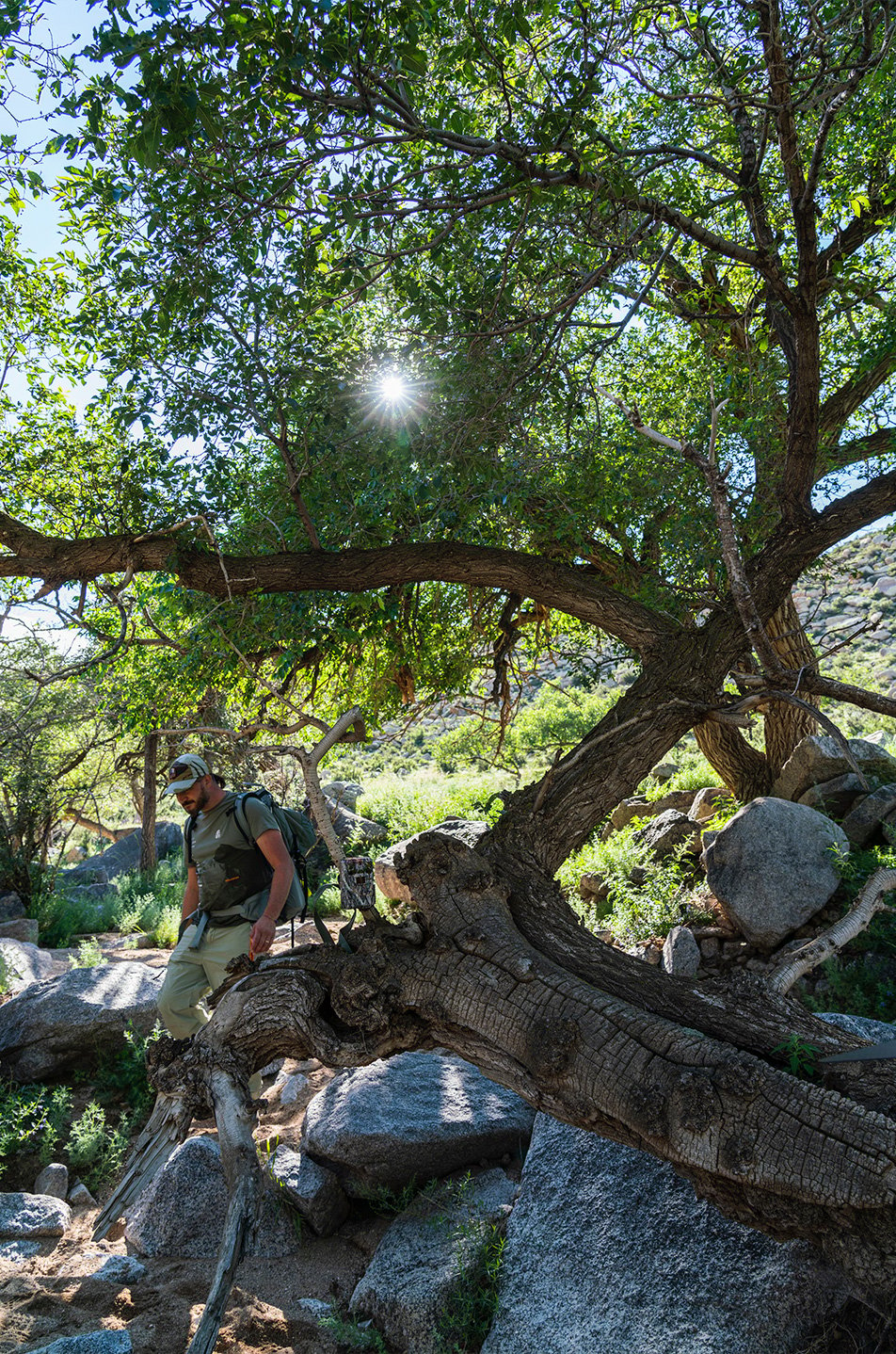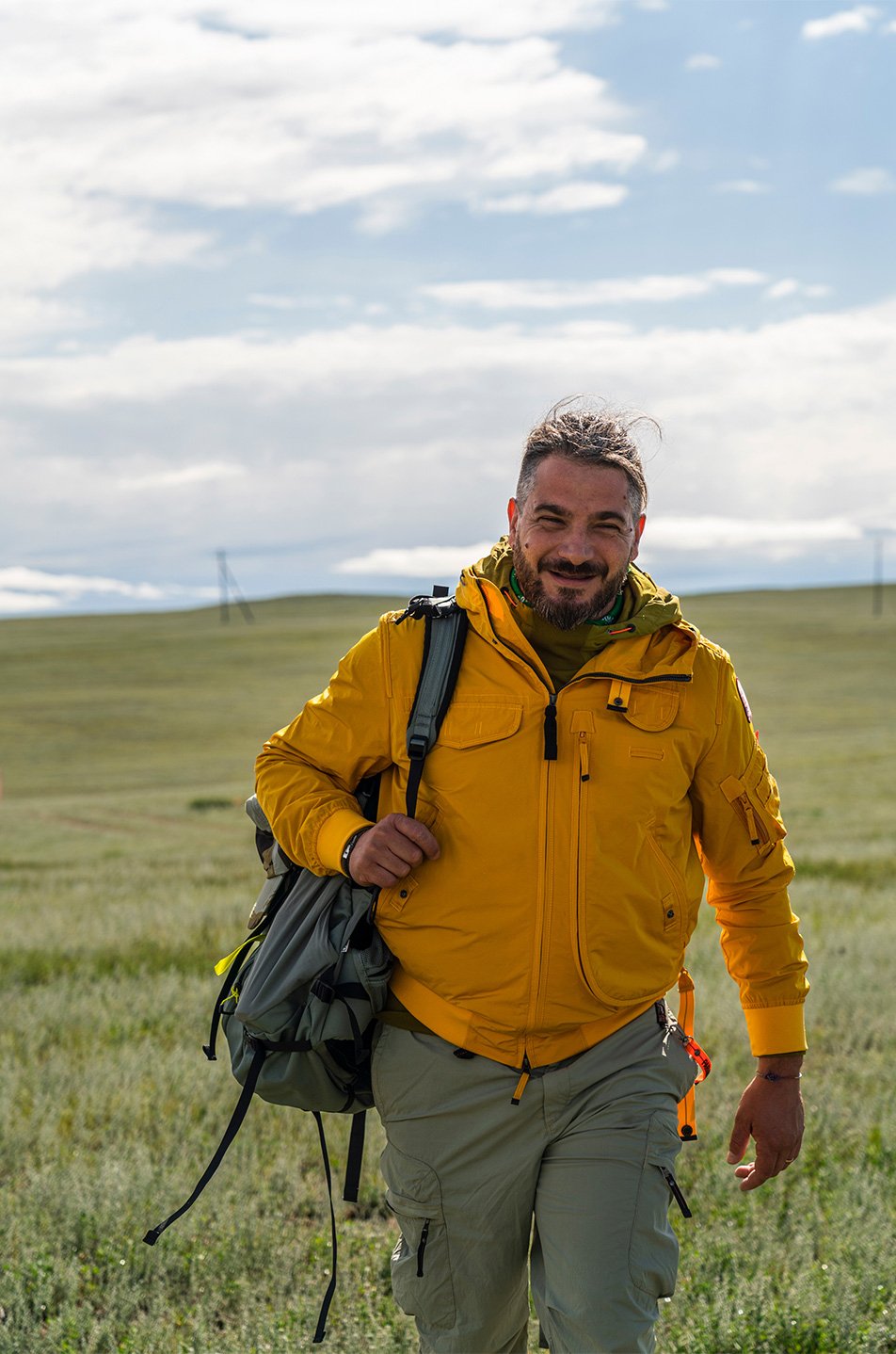
For protection against the harsh winds and ever-fluctuating temperatures of the Mongolian steppe, the Wildlife Initiative team wore Parajumpers’ classic Gobi Spring jacket, its yellow Solotex poplin vibrant against the neutral tones of the rocky landscape. This was layered over a light T-shirt, and paired with our Rescue Uniform pants, made from hard-wearing stretch ripstop.
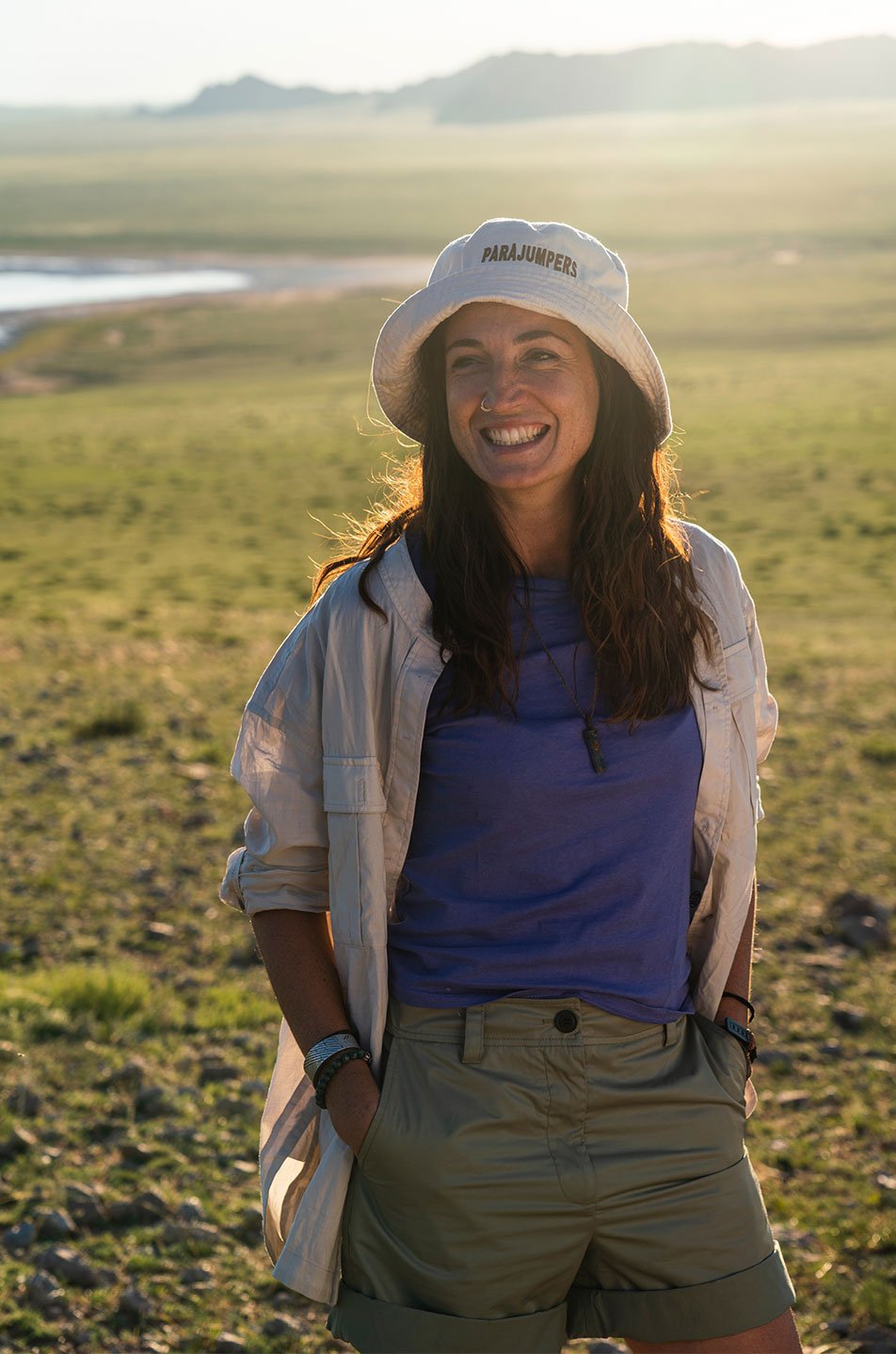
And for the blazing sunshine that illuminates the vast horizon, Wildlife Initiative chose canvas hats, light muslin shirts and easy-to-wear shorts from our Safariana series.
The hard work of the team pays off: the team records around 23 Pallas’ cats making hundreds of journeys. Analysing this data involves identifying individual cats in order to estimate population density, as well as gathering information to verify what experts believed was Pallas’ cat’s main food source: the pica and the Mongolian silver vole. But it’s through this intense data capture and interpretation – the result of many hours of painstaking hard work - that we’ve been able, for the first time, to truly begin to understand the Pallas’ cat.
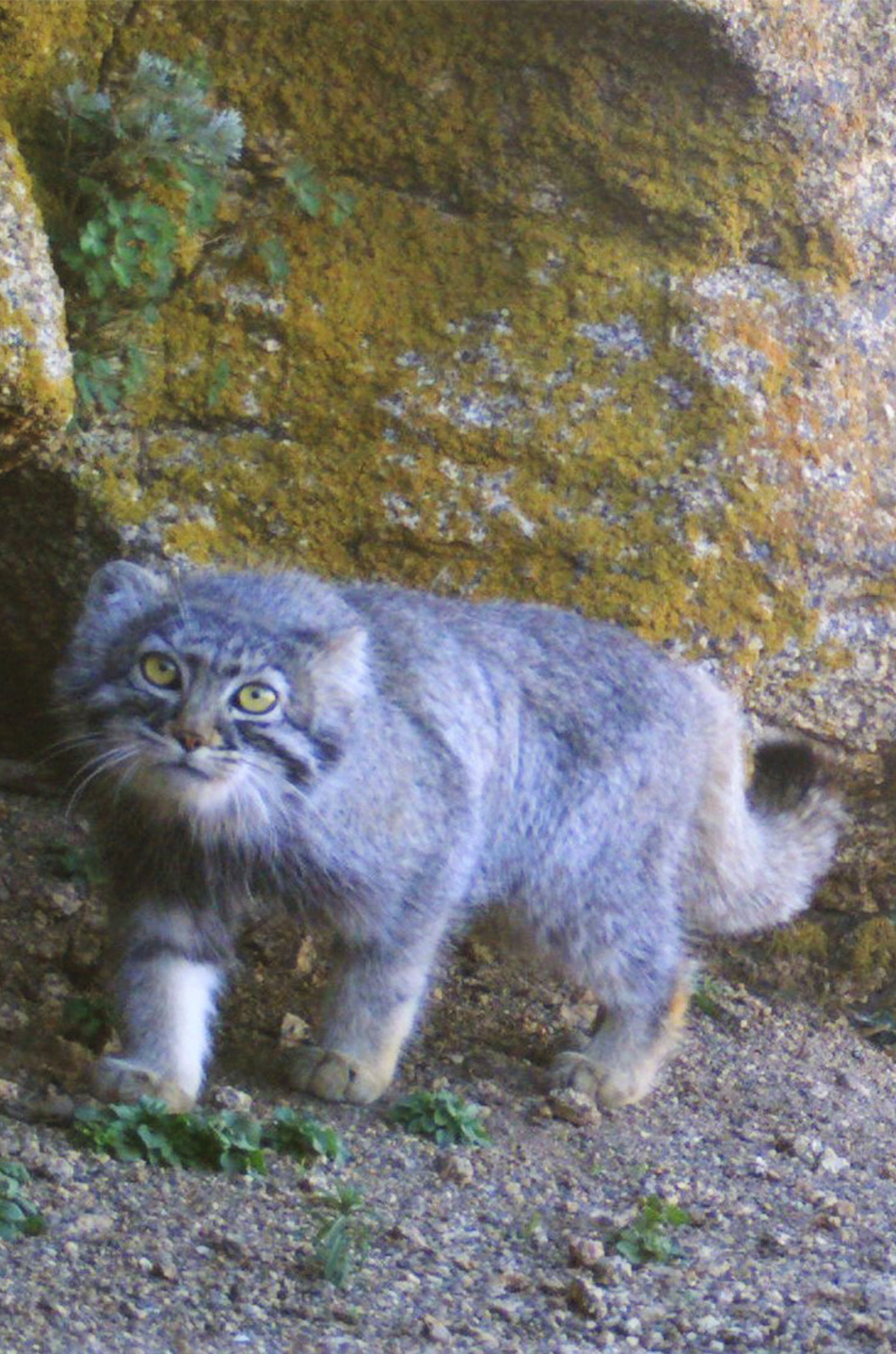
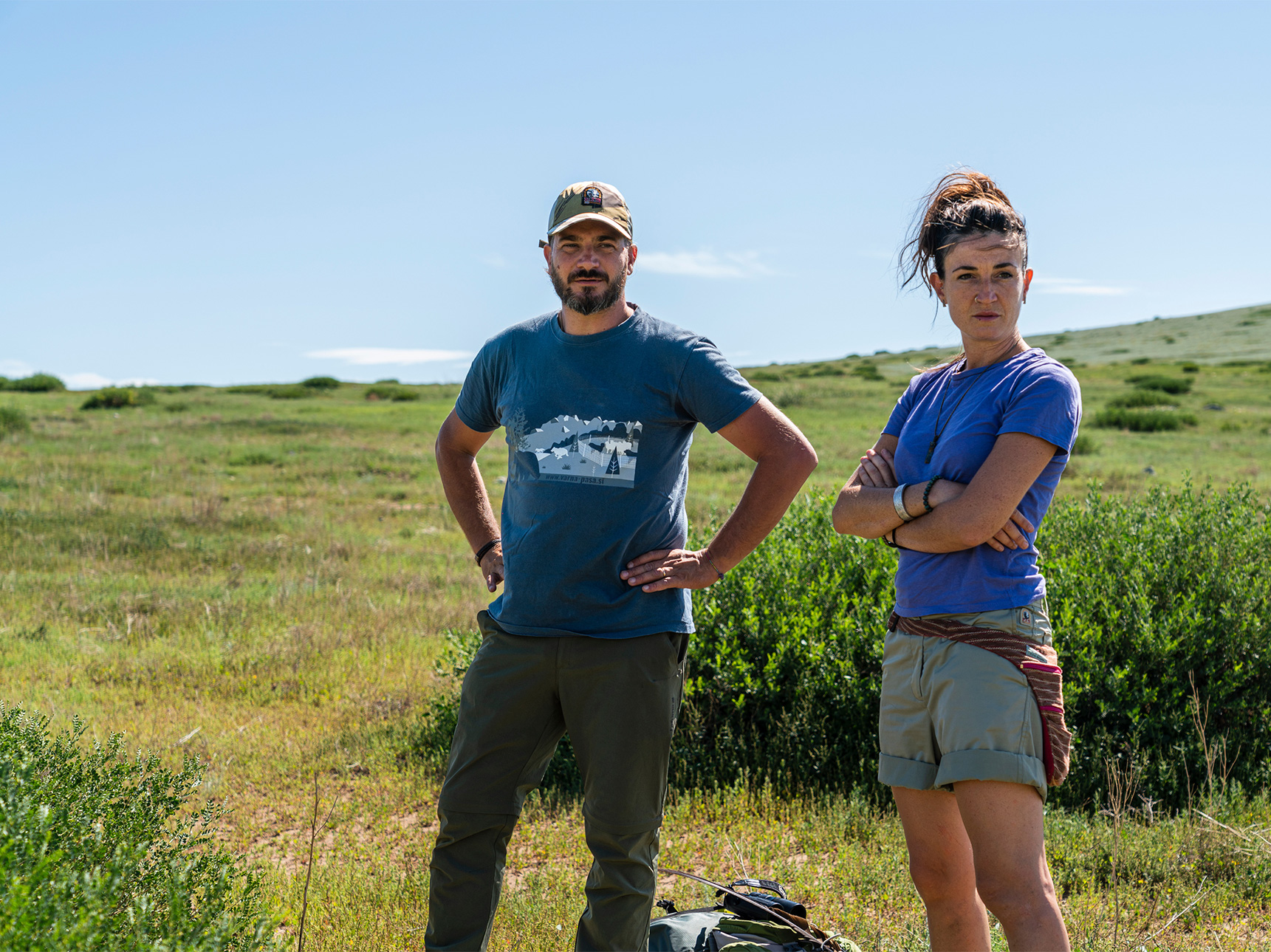
It’s this dedication – the commitment to hard work, adventure, and sheer determination, no matter the circumstances – that inspires and motivates Parajumpers’ efforts to support organizations like the Wildlife Initiative.
DISCOVER OUR SPECIAL PROJECTS
-
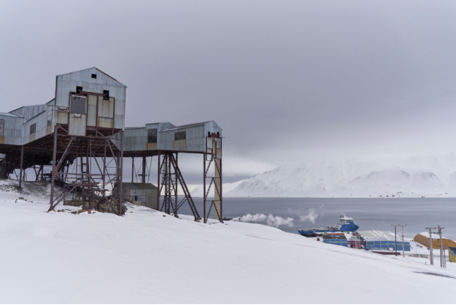 VOICES FROM AN ICY COASTThe Parajumpers Stories speak of lives outside the ordinary, lived in the remotest corners of earth where powerful forces of nature make everyday survival a challenge.Discover more
VOICES FROM AN ICY COASTThe Parajumpers Stories speak of lives outside the ordinary, lived in the remotest corners of earth where powerful forces of nature make everyday survival a challenge.Discover more -
 WIGGO ANTONSENLongyearbyen is the largest settlement and administrative centre of Svalbard.Discover more
WIGGO ANTONSENLongyearbyen is the largest settlement and administrative centre of Svalbard.Discover more -
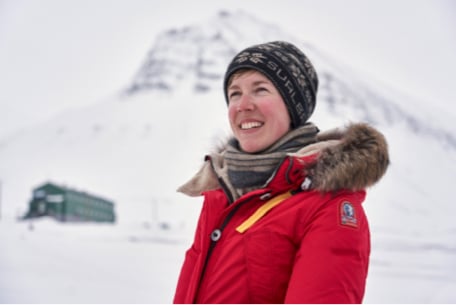 HEIDI SEVESTRESvalbard in Norwegian means “Icy Coast”. Yet Heidi Sevestre, a resident ‘ice doctor’, has seen the troubling signs that this frozen landscape has changed in recent decades.Discover more
HEIDI SEVESTRESvalbard in Norwegian means “Icy Coast”. Yet Heidi Sevestre, a resident ‘ice doctor’, has seen the troubling signs that this frozen landscape has changed in recent decades.Discover more -
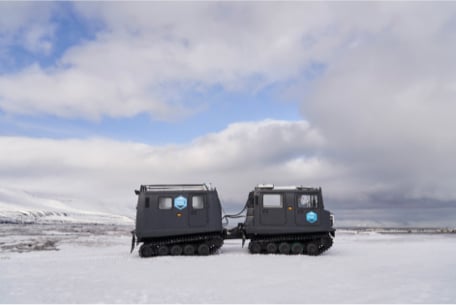 JASON ROBERTSThe rugged beauty of Svalbard can make it difficult to leave. Just ask Jason Roberts, originally from Australia and one of the long- time residents of the Norwegian Archipelago.Discover more
JASON ROBERTSThe rugged beauty of Svalbard can make it difficult to leave. Just ask Jason Roberts, originally from Australia and one of the long- time residents of the Norwegian Archipelago.Discover more -
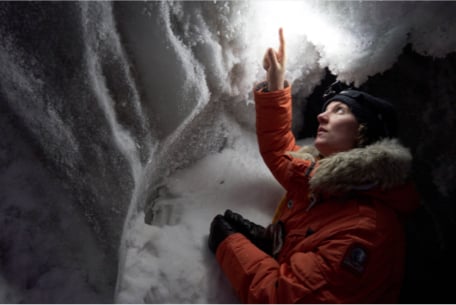 KRISTIN ERIKSSON“Guiding guests through the wilderness of Svalbard is “the best job you can have”, says Kristin Eriksson. At just 23, Kristin has already been a nature guide on 3 different Continents.Discover more
KRISTIN ERIKSSON“Guiding guests through the wilderness of Svalbard is “the best job you can have”, says Kristin Eriksson. At just 23, Kristin has already been a nature guide on 3 different Continents.Discover more -
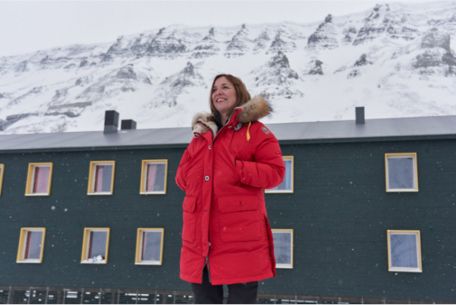 HEGE GISKEIn the last decade, more and more people have come to Svalbard motivated by the beauty of the place but also by the challenge of what it means to survive both as a community as well as an individual in such a unique location.Discover more
HEGE GISKEIn the last decade, more and more people have come to Svalbard motivated by the beauty of the place but also by the challenge of what it means to survive both as a community as well as an individual in such a unique location.Discover more


